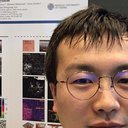Paeonia lactiflora Pall. protects against ANIT-induced cholestasis by activating Nrf2 via PI3K/Akt signaling pathway.
Kľúčové slová
Abstrakt
BACKGROUND
Paeonia lactiflora Pall. (PLP), a traditional Chinese herbal medicine, has been used for hepatic disease treatment over thousands of years. In our previous study, PLP was shown to demonstrate therapeutic effect on hepatitis with severe cholestasis. The aim of this study was to evaluate the antioxidative effect of PLP on alpha-naphthylisothiocyanate (ANIT)-induced cholestasis by activating NF-E2-related factor 2 (Nrf2) via phosphatidylinositol 3-kinase (PI3K)/Akt signaling pathway.
METHODS
Liquid chromatography-mass spectrometry (LC-MS) was performed to identify the main compounds present in PLP. The mechanism of action of PLP and its therapeutic effect on cholestasis, induced by ANIT, were further investigated. Serum indices such as total bilirubin (TBIL), direct bilirubin (DBIL), aspartate aminotransferase (AST), alanine aminotransferase (ALT), alkaline phosphatase (ALP), γ-glutamyl transpeptidase (γ-GT), and total bile acid (TBA) were measured, and histopathology of liver was also performed to determine the efficacy of treatment with PLP. Moreover, in order to illustrate the underlying signaling pathway, liver glutathione (GSH) content and mRNA or protein levels of glutamate-cysteine ligase catalytic subunit (GCLc), glutamate-cysteine ligase modulatory subunit (GCLm), Akt, heme oxygenase-1 (HO-1), NAD(P)H/quinone oxidoreductase 1 (Nqo1), and Nrf2 were further analyzed. In addition, validation of PLP putative target network was also performed in silico.
RESULTS
Four major compounds including paeoniflorin, albiflorin, oxypaeoniflorin, and benzoylpaeoniflorin were identified by LC-MS analysis in water extract of PLP. Moreover, PLP could remarkably downregulate serum levels of TBIL, DBIL, AST, ALT, ALP, γ-GT, and TBA, and alleviate the histological damage of liver tissue caused by ANIT. It enhanced antioxidative system by activating PI3K/Akt/Nrf2 pathway through increasing Akt, Nrf2, HO-1, Nqo1, GCLc, and GCLm expression. The putative targets network validation also confirmed the important role of PLP in activating Akt expression.
CONCLUSIONS
The potential mechanism of PLP in alleviating ANIT-induced cholestasis could to be related to the induction of GSH synthesis by activating Nrf2 through PI3K/Akt-dependent pathway. This indicates that PLP might be a potential therapeutic agent for cholestasis.




